Exploring a theoretical solution for fast fashion consumption among Gen Z
Jason Moore • MFA Graphic Design Thesis Project
Liberty University, Summer 2024
RESEARCH & FINDINGS
BACKGROUND
Fast Fashion has significant adverse environmental and social impacts, resulting in 4.13 billion lbs. of CO2 emissions being released each year (IEA). Because fast fashion is based on current and quickly passing trends, these brands produce too much product at prices that are lower than more sustainable options, encouraging consumers to buy and eventually dispose of clothes faster than ever. While the environmental effects are harmful, the social issues that surround fast fashion are just as serious, involving health risks, dangerous environments, and child labor.
WHO IS GEN Z?
Gen Z refers to individuals who are born between 1995 and 2010. Gen Z makes up a third of the US population at 25.9% (Seemiller, White). This makes Gen Z the largest generation to date. Unlike millennials, who grew up in a world of developing digital technology, Gen Z can be considered the first generation to grow up entirely immersed in a technologically advanced world (White). From high-speed internet to a plethora of social media platforms, Gen Z has never known a world without information at their fingertips. In many ways, Gen Z has been shaped by a rapidly changing modern world. They grew up experiencing the challenges of financial crisis, increased political polarization, environmental issues, and social concerns. Yet, this resilient generation is showing some positive traits despite these not-so-desirable conditions (Seemiller). The values and beliefs of Gen Z are a direct reflection of the world in which they grew up. Research shows activism for social justice and climate change as overarching themes for this generation (Hess, Seemiller, White).
Gen Z is relentless in the pursuit of social justice, with heightened sensitivity toward systemic inequality and a drive to create positive change in the world. As an extension of their commitment to social justice, Gen Z strongly supports ideas of inclusivity, diversity, and general acceptance (Seemiller). Another hot-topic issue for this generation is climate change, and the real-time effects they can see have them feeling the need to take action. Studies show that Gen Z and millennials contribute the most to climate change activism.
Younger generations are acutely aware of the ignorance that still surrounds this issue by the preceding generations (“Gen Z and Millennials…”). Data sources also create a compelling argument for the climate toll resulting from the use of fossil fuels. The amount of air pollution is large and rapidly growing, causing global warming, climate disasters, water shortages, and negative long-term health of the environment (Perera).
Gen Z strongly believes that if they want to see change, they have to be a part of making it happen. They believe in the power of voting, and they are not afraid to raise funds or make personal life changes for these causes (Seemiller). “[Gen Z is] active, they are engaged, and they intensely care about the country. They are also angry at the mess that we have handed down to them over the past several decades with climate change…(Hess).” This desire for activism and change is made actionable by a tool that they know best: social media.
Gen Z is known for being digital natives. Having grown up with the internet in their pockets via smartphones, they have constant access to information. They also have the ability to disseminate information quickly by leveraging various social media platforms. Apps that are most popular among Gen Z include TikTok, Instagram, Snapchat, and BeReal (Boffone, Mittmann, Nugroho, Seemiller, White). This generation prefers social media platforms that prioritize an image of authenticity, creative expression, and quick communication. With a knack for aesthetics and storytelling, Gen Z gravitates toward platforms such as TikTok and Instagram, where they can share visually-driven, short-form content like photos, memes, and video clips. Gen Z also prefers to use social platforms that can provide anonymity such as Snapchat and BeReal (Beffone). Additionally, Gen Z has a nuanced understanding of algorithms, influencer culture, and corporate sponsor interest. With this insight, Gen Z has the acute ability to discern the authenticity of content and they naturally gravitate toward those who most closely align with their interests and values (Hazari). Observing Gen Z’s social media skills, combined with their desire for social justice, shows that they wield the power of social media as a tool for social change. Through the use of hashtags, challenges, and digital campaigns, they bring awareness to various social issues and elicit action from their peers (Seemiller).
ENVIRONMENTAL ISSUES CAUSED BY FAST FASHION
Producing trends at lightning speeds and affordable prices comes at a cost that is higher than most consumers realize. This demand has led to a rapid increase in fiber production for textiles. Textile production involves the use of water, oil, and pesticides in massive amounts, and the dying process of these textiles releases a cocktail of chemicals and pollutants into local water systems, poisoning wildlife and endangering the health of people (Bick). In addition to excessive water use and pollution, the fashion industry is responsible for 10% of the annual global greenhouse gas emissions. At the current pace, the fashion industry’s projected greenhouse gas emissions will surge more than 50% by 2030 (Le). Because fast fashion is based on passing trends, fast fashion is consumed and disposed of quickly as new trends emerge. While half of all used clothes are reused or resold, 57% of all discarded clothes end up in landfills. Synthetic fibers containing toxins and microplastics that do not break down naturally are leached from landfill waste and end up in our water systems, in our oceans, and eventually back into our food supply. When landfills begin to reach capacity, piles of garbage are moved to be incinerated. This creates health and environmental risks to those in nearby communities as large amounts of poisonous gases and toxic substances are released into the air (Le). Unfortunately, in addition to adverse environmental consequences, fast fashion also comes with its share of social issues.
SOCIAL ISSUES CAUSED BY FAST FASHION
Research reveals a complex web of inequality, exploitation, and human rights issues, caused by the fast fashion industry. Profit margins tend to take precedence over the well-being of workers in manufacturing facilities. In the grand scheme of things, fast fashion brands often choose to turn a blind eye to the behind-the-scenes issues in an effort to maintain fast manufacturing speed at competitive prices. Assembly workers in low-to-middle-income countries face a myriad of health hazards caused by poor ventilation (Bick). The workspaces made for these workers are cramped, and the structure of facilities are unregulated and often dangerous. An unfortunate example of these dangerous work environments is the tragedy of the Rana Plaza disaster in 2013 when a factory collapsed, killing 1,129 employees and injuring countless others (Ozdamar-Ertekin). Another problem is the issue of unlivable wages. Lower costs of fast fashion mean that production costs get cut along the way. Many times, this cut comes out of the pockets of manufacturing workers by severely underpaying them. This often happens in countries where wages are already low due to the systematic exploitation of factory workers and the lack of regulation. In low-to-middle-income countries, garment manufacturing workers are some of the lowest-paid in the world. Some only earn a few dollars daily (Ozdamar-Ertekin). Additionally, 200 million children around the world are forced into child labor (Cho). When it comes to offenders of child labor, the fashion industry is considered one of the largest. Child labor is associated with negative health effects such as stunted growth, disease, malnutrition, behavior issues, and mental disorders (Ibrahim).
POTENTIAL SOLUTIONS TO FAST FASHION
There are solutions to fast fashion that, if widely adopted, could reduce its adverse environmental and social impact. These solutions include slow fashion, second-hand fashion, green marketing, and leveraging influencer marketing.
Slow fashion represents a sustainable and holistic approach to clothing design, production, and consumption. Slow fashion is built on the idea of environmental sustainability, social responsibility, and ethical manufacturing. Commitment to craftsmanship, quality, and longevity sets slow fashion apart from fast fashion. In addition to its focus on high-quality garments and ethical manufacturing, slow fashion also supports environmental sustainability. This is achieved with an emphasis on eco-friendly materials (Seock). Slow fashion also promotes the idea of mindful consumption habits by encouraging consumers to invest in higher-quality pieces that will last longer and that they will want to wear for years. This approach significantly extends the life cycle of clothing, especially when paired with second-hand methods, which will reduce waste in landfills over time.
Second-hand fashion includes clothing that has been previously owned and is being resold in thrift stores or online marketplaces. Almost all second-hand stores also accept donations, providing a place for used clothing to go as a better alternative to disposal in landfills.
Recently, younger generations have gravitated toward second-hand thrift shopping. Reasons include creative personal style expression, environmental sustainability, and cost-effectiveness (Manley). With this increased interest, circular business models such as resale, rental, and repair are gaining traction (Hellström). We already see brands like Goodwill that are resale only, but there is potential in this shifting market for existing fashion brands to restructure their business models to capitalize on resale, rental, and repair. There are already a few fashion brands that use aspects of this circular model, such as The North Face, Fjällräven, and Patagonia, which all provide repair services on their products through various warranties. This keeps clothing out of landfills, sometimes even over the course of two to three lifetimes, depending on the original quality of the materials and how they hold up over time.
Green marketing represents an authentic and transparent approach to promoting environmental sustainability by marketing products that stimulate and maintain eco-friendly consumer behavior (Natasya). Green marketing involves fostering an environment of honesty, credibility, and accountability. Generally, consumers are aware of the unsustainable behaviors and practices of fast fashion, yet many times, this knowledge does not affect their consumption habits. Many respondents expressed guilt for this and suggested they need more information to make better-informed, sustainable decisions (Williams). Authentic green marketing is needed to help teach sustainable consumption habits of fashion.
Influencer marketing holds a great deal of power over Gen Z’s perceptions and actions. Brands strategically partner with influencers that they believe Gen Z will view as credible. This credibility includes their attractiveness, trustworthiness, and expertise. Studies reflect an even higher correlation between the attractiveness of an influencer and consumer purchase intention. The higher the attractiveness of an influencer, the more likely a consumer will purchase what they are endorsing. There is also the increased likelihood that they will perceive the brand image of the endorsed product in a positive light (Nugroho). Utilizing the power and reach of these influencers could be a solution to the problem of fast fashion.
THE VALUE-ACTION GAP
Research constantly shows that Gen Z values sustainability. They are also aware of the adverse environment and social issues posed by fast fashion. However, Gen Z’s actions do not always reflect this value for sustainability in their consumption habits (Papasolomou). This disconnect is referred to as the value-action gap (Palomo-Domínguez, Papasolomou, Williams). Reasons for the value-action gap include the need to follow established habits, lack of knowledge, cynicism toward the impact that one person could have, and inflated prices of sustainable apparel options (Williams). For a shift in consumer habits, stakeholders must develop strategies that close the value-action gap. Whatever the strategy, it is important to approach it with authenticity, honesty, and brand transparency to effectively engage Gen Z consumers.
VISUALS & AESTHETICS THAT APPEAL TO GEN Z
In addition to the case studies and visual research for this thesis, it is equally important to research the visual and design aesthetics that appeal to Gen Z. In creating a brand that appeals to this generation, inclusive experiences, authenticity, relatability, social proof, engagement, and a sense of humor are all necessary ingredients (Muavia). This finding also aligns with research from the literature review as reflected by Gen Z’s personal beliefs and values. The visual aspects that appeal to Gen Z can best be reflected in their clothing choices. This generation is a little different than others in the breadth of choices they have to choose from, unlike previous generations who could be largely defined as a certain style or aesthetic. This is because Gen Z has a larger palette for their aesthetics and fashion choices than any generation before thanks to inspiration through online social media and easy accessibility to those styles through fast fashion brands like ASOS and Temu (Weekman). Gen Z thrives on micro-trends and core aesthetics that are as unique as the members of this diverse generation. Trends such as “main character energy,” “cottagecore,” “euro summer,” “tomato girl,” “coastal grandmother,” “corporate baddie,” “indie sleaze,” “frazzled English woman aesthetic,” “gorpcore,” “avant apocalypse,” “Y2K,” “boho,” “witchy/whimsigoth,” “concert girl,” “e-boy/e-girl,” and “vintage aesthetic,” just to name a few, are trends that dominate Gen Z social spaces like TikTok and Instagram (Weekman). As diverse as these micro-trends are, most of them have one thing in common–they reference established aesthetics from the past. There is an element of nostalgia to these trends in the way that they “reappropriate and reinvent consumer goods (Armstead)” of the past. This is further supported in fashion research about trends. Until the 1970s, fashion was seen as linear. This meant that the latest styles and aesthetics were thought of as superior to the previous styles. This was the modernist philosophy. Postmodernism disrupted this pattern by rejecting these ideas, questioning the “rules” of fashion, reusing past style inspirations and trends, and dissociation of styles from their original contexts and meanings. From the postmodernism movement, fashion has become a complex and multi-directional system of personal expression (Armstead). This is perhaps never more so true than with Gen Z. These research findings are important in the visual direction of this thesis solution, especially in the selection of colors and typefaces. Because nostalgia and vintage aesthetics largely appeal to Gen Z, in and out of fashion, the color palette will include vintage hues while at the same time remaining bright and vivid to reflect the youthful, humorous, and diverse energy of this young generation. Because much of the visual solution will include images of thrifted fashion, these colors will also complement the photographed imagery. The typefaces chosen will be timeless and clean as to blend across various styles and aesthetics of this generation. There will also be an element of hand-crafted creativity in the brand. Therefore, a hand-crafted display typeface will also be utilized in parts of the design solution.
RESEARCH CONCLUSION
This research has illuminated the key issues in the fast fashion consumer behaviors of Gen Z. It has defined fast fashion as well as the environmental and social issues it poses, along with some methods for combating the fast fashion model. Challenges such as the knowledge conundrum and the value-action gap are analyzed, and potential methods for solving those disconnects are provided based on research. Considering this research from the literature review, a successful theoretical design solution would be a non-profit project with the purpose of raising awareness about sustainable practices. This idea focuses on the support of organizations and causes that already exist with environmental sustainability at their core. This non-profit would be designed to reach Gen Z audiences in order to raise awareness and foster lifelong sustainable practices among younger generations. This could include the dissemination of information in an effort to build knowledgeable audiences, or it could be endorsing sustainable and second-hand brands that already exist. This route includes the creation of a logo & brand design package, posters, billboards, non-traditional advertising, website, and social media materials.
Potential challenges posed when marketing to Gen Z as the target audience include creating authentic communication, facing the knowledge conundrum, closing the value-action gap, and gaining trust among this already skeptical generation. Research suggests that one of the best ways to break through these challenges with Gen Z is to utilize testimonials, celebrity endorsements, or influencer-based materials. It is important that the information be well-designed and highly educational, as most people know why they should make sustainable choices, but they do not realize the behind-the-scenes consequences when they do not follow through with those choices. Most importantly, Gen Z needs to see the design solution as an opportunity to make a positive, lasting difference that they can share with others either online or in person.
CASE STUDIES & VISUAL ANALYSIS
Visual Analysis I: Adolfo Dominguez, “Old Clothes” Campaign
The pieces chosen for this visual analysis depict fashion models wearing clothing that is 30-40 years old in the “Old Clothes” campaign created by Adolfo Dominguez. The purpose was to promote the benefit of purchasing quality, timeless articles of clothing that will last longer than cheaper clothing based on passing trends. The audience for this campaign would likely be younger adults similar to the age of the models selected for this campaign. Whereas the clothing utilized in the campaign is much older and belongs to an older audience, the messaging and design are geared toward a younger audience. This fashion label wanted to make young people aware of the benefits of purchasing quality clothing by displaying how long it could last in both its construction and style.
This visual solution was designed to be consumed through three different mediums–print, web, and video. These can be consumed hand-in-hand with each other or as stand-alone mediums. The print medium was designed as posters, large prints, and shop signage, where the campaign photography and messaging were implemented. Large-scale prints and bold typefaces demand attention and communicate the campaign messaging to those passing by the brick-and-mortar store. The web medium was designed as a web page that viewers could be directed to for more information or even as a linked landing page for social media campaigns. The webpage features the same images of models photographed in 30-40-year-old clothing with the bold headline that encourages viewers to “buy clothes that will last longer than the trends.” The video is an interview-driven medium that supports the messaging of the campaign. It includes testimonies from both the owners of the clothing used in the campaign and the models that were selected to model the clothing.
This campaign was created and published in 2020, during the pandemic and during a time when everyone was moved online as their main source of communication. Influences of online voices surrounding politics, especially those involving sustainability and environmental concerns, were no doubt driving forces of the ideas behind this campaign. Adolfo Dominguez is a designer of quality crafted clothing, and the biggest competitors of quality fashion labels are fast fashion clothing brands that produce trendy clothing at a fraction of the cost. This is particularly true among younger audiences like Gen Z and millennials, whom this campaign clearly targets. Younger generations do not always have the funds or see the value in investing in quality clothing, so they will usually go for the cheaper options that are based on changing trends, creating tons of waste in the long run.
When analyzing the content of the visual solutions, there are a few key interrelations. For this campaign to be successful, the clothing that is being modeled needed to be shown in a new light. It was imperative that the photographs looked fresh and new to accompany the idea that old things can compete with the preconceived notion that new is better. The photographer kept the photographs simple yet tasteful, with models and poses that are clean and do not distract from the clothing. In many of the photographs, the clothing is almost displayed as works of art themselves, creating the idea that those who buy these clothes are investing in a work of art. The text in the designs complements the photographs as a clean sans serif font in either white or black. This further supports the clean, modern approach to the designs. The photos themselves also alternate between color and monochromatic black and white. Monochromatic photos are often seen as timeless and usually fit any visual theme, further communicating the timelessness and versatility of quality clothes crafted with longevity in mind.
Because the visual solutions for this campaign can be described as clean and simple, this approach could be valuable when targeting Gen Z concerning sustainable fashion consumption. Similar to the target audience of the “Old Clothes” campaign, this thesis solution will also target younger adults who will more likely be drawn to visual solutions that are modern and with clothing that is worn by attractive models. This could further connect to the ideas of the influencer effect mentioned in the literature review, where Gen Z’s actions and purchase intention are more likely to be influenced by those they see as attractive.
Old Clothes Campaign. 2020. Adolfo Dominguez, https://www.adolfodominguez.com/en-es/ropa-vieja.html?utm_source=cj&utm_content=8460148&utm_term=12365063&utm_medium=adolfodominguez.com. Accessed 6 May 2024. 



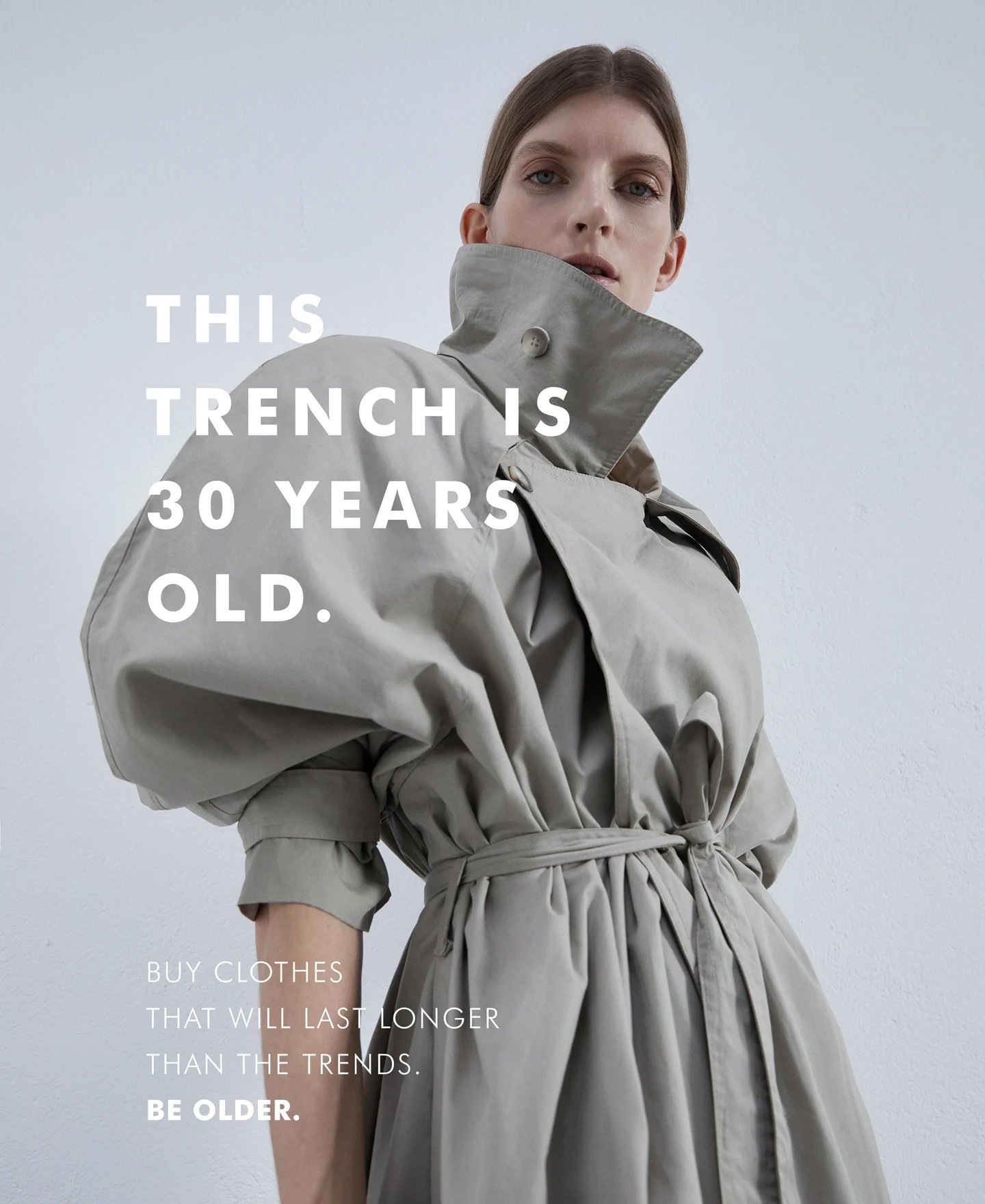
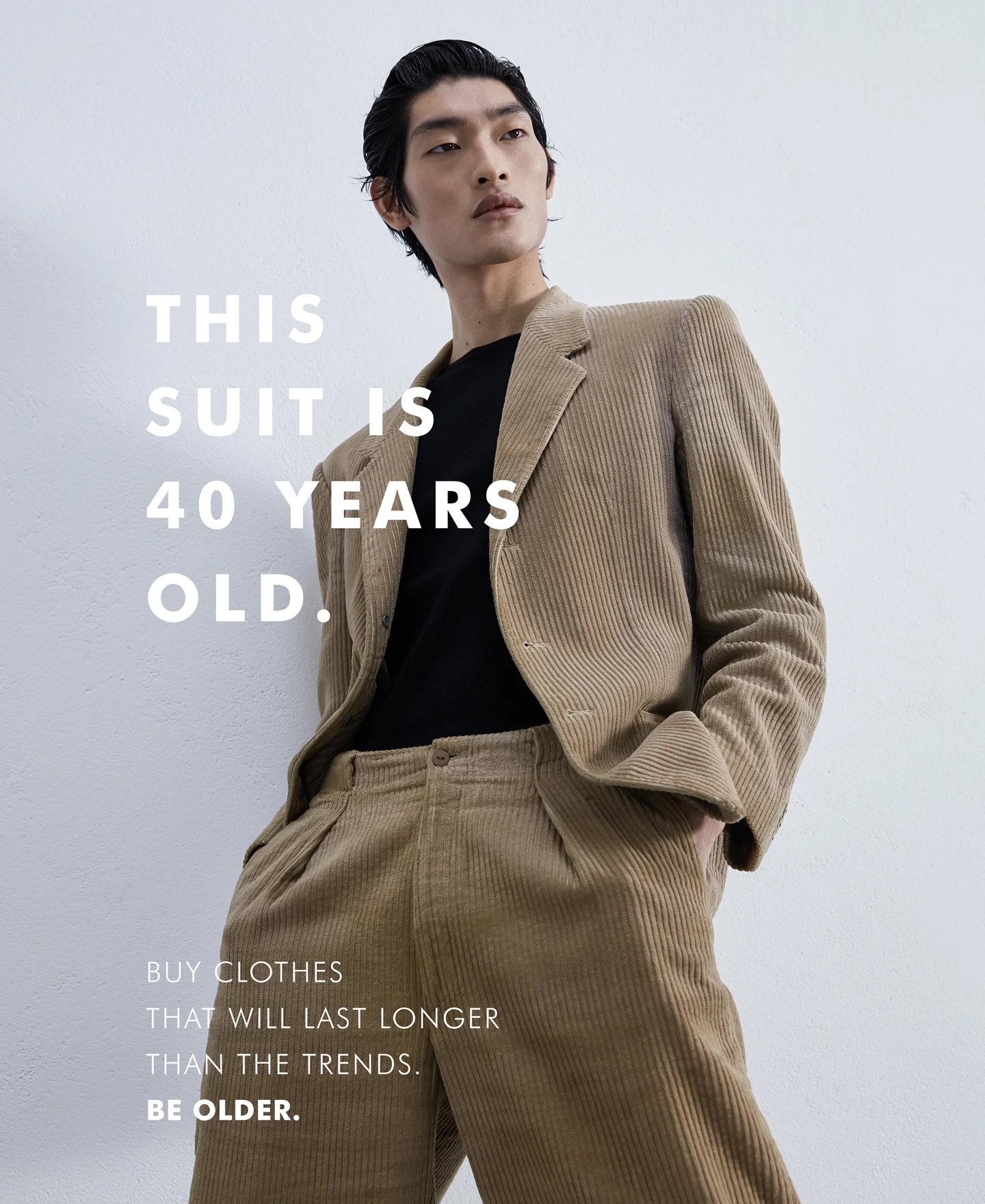




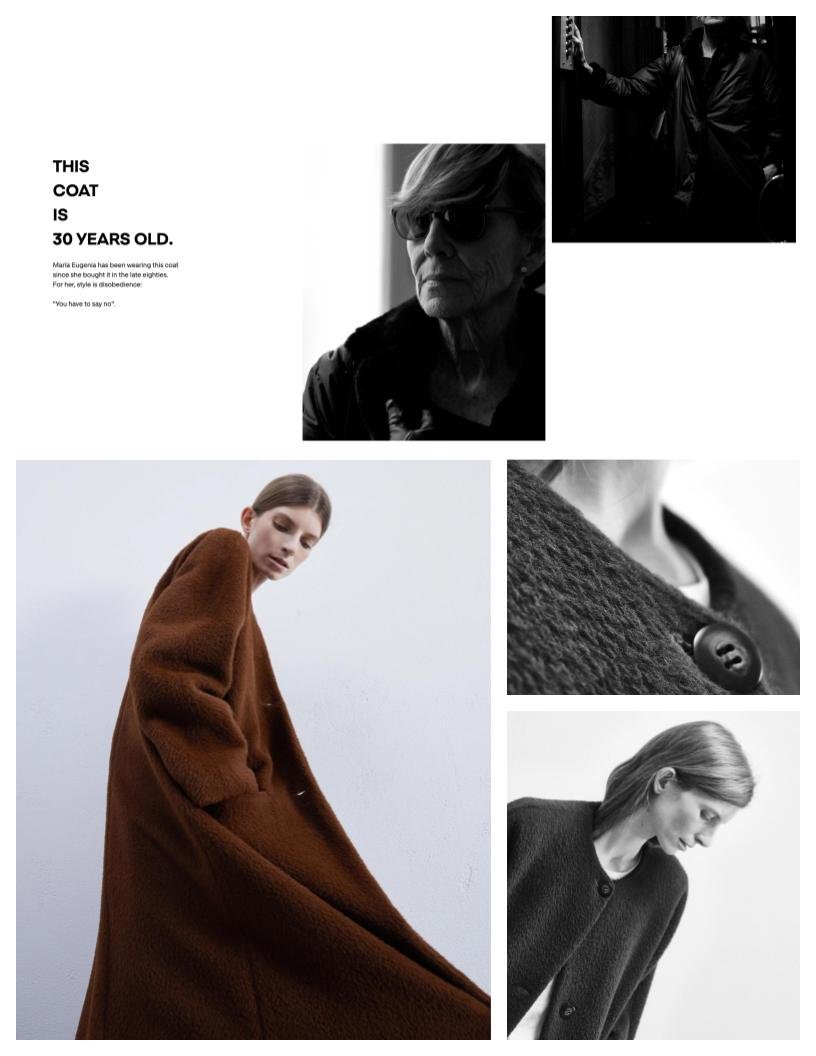
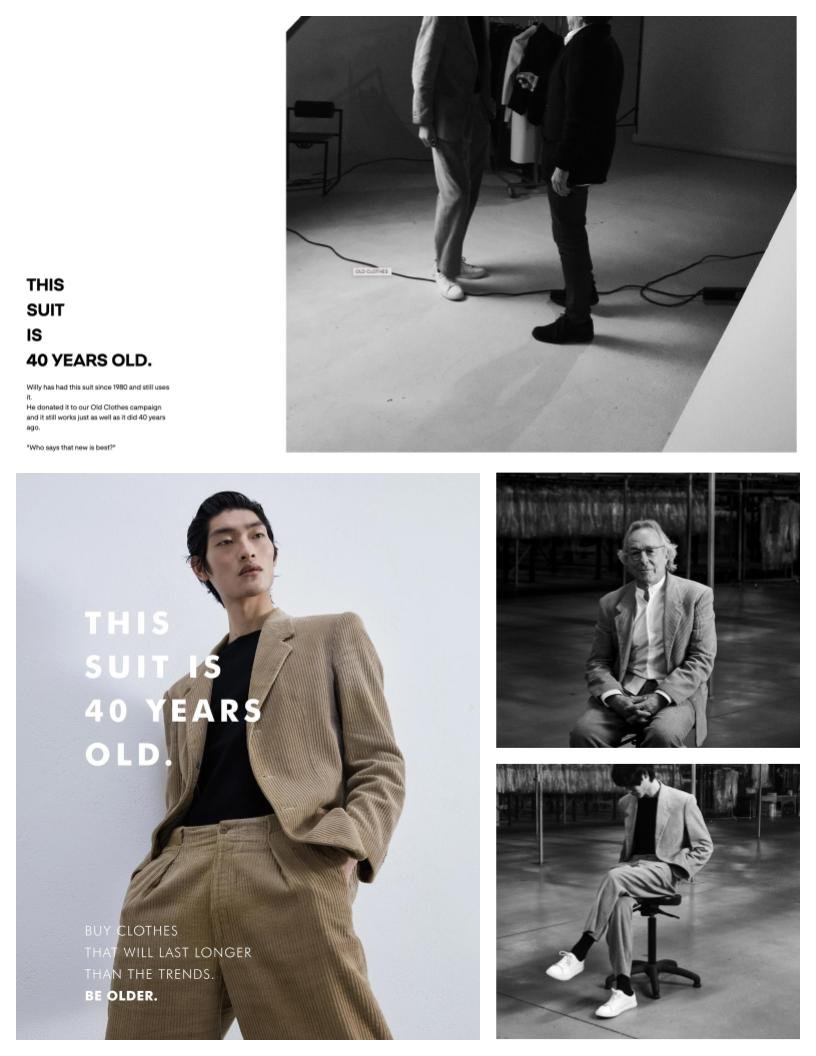
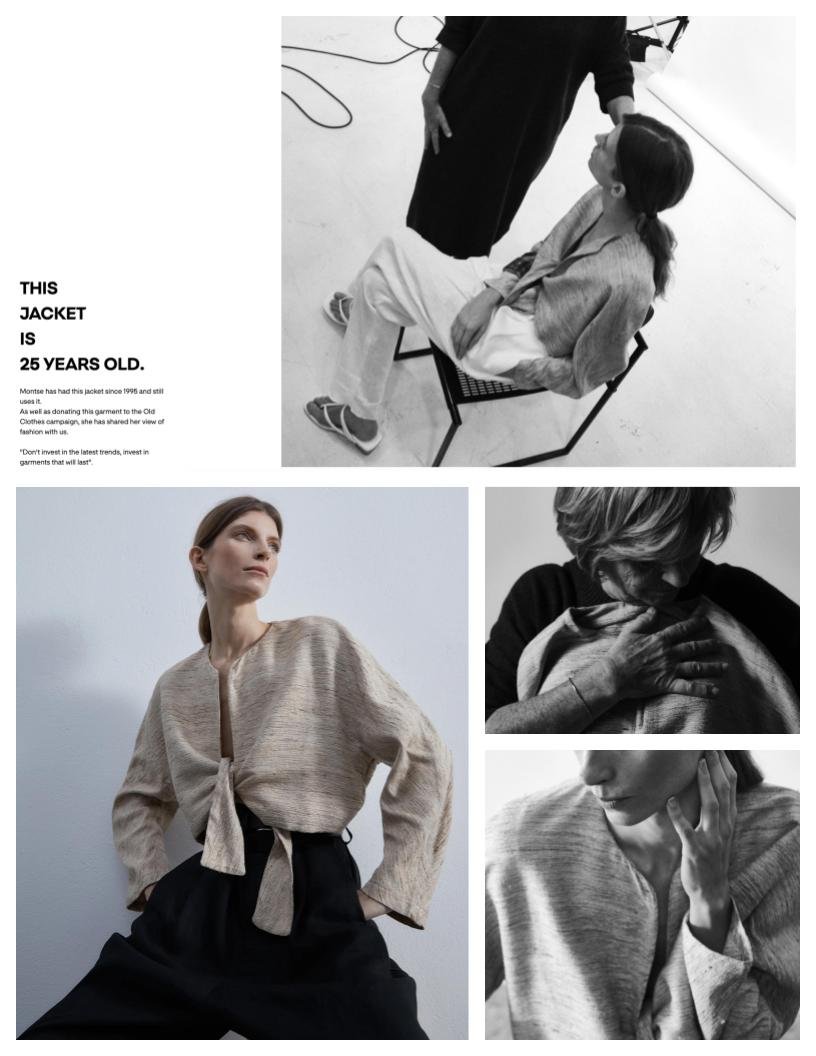
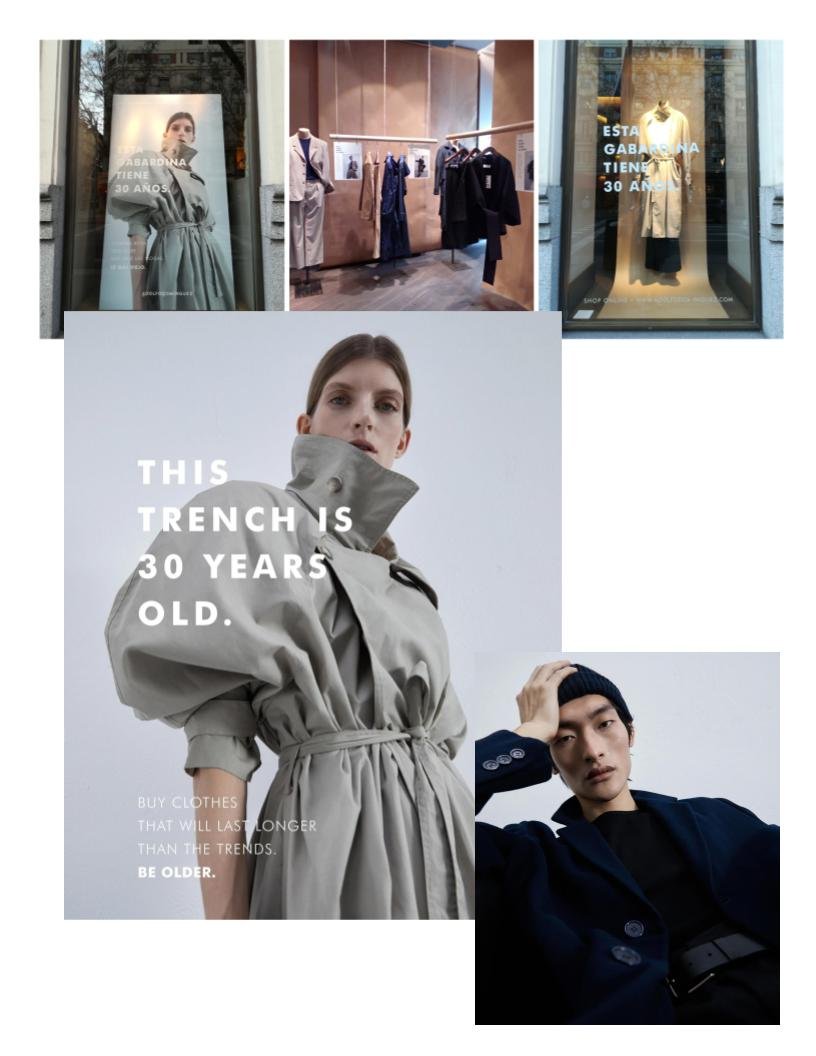




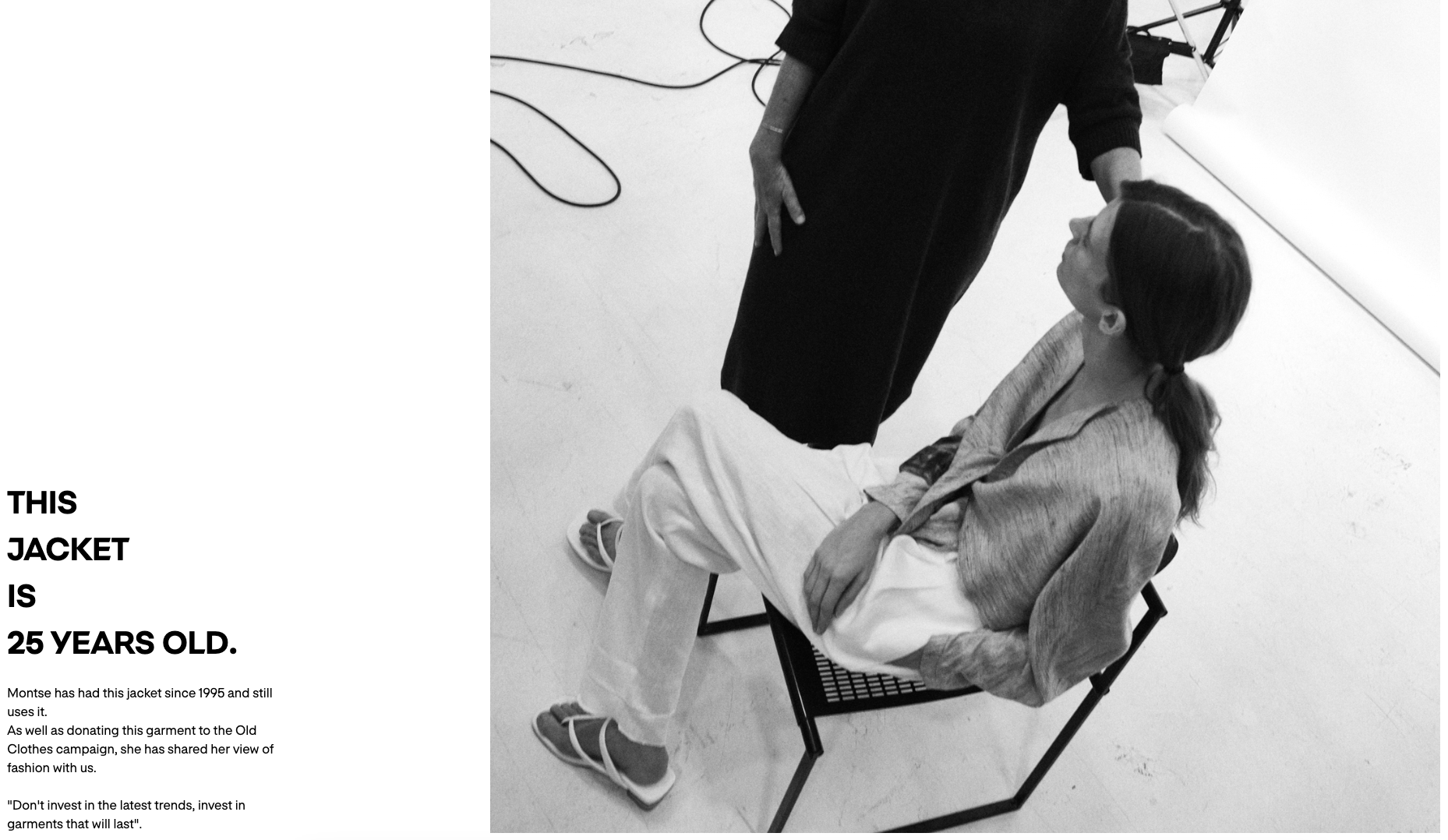

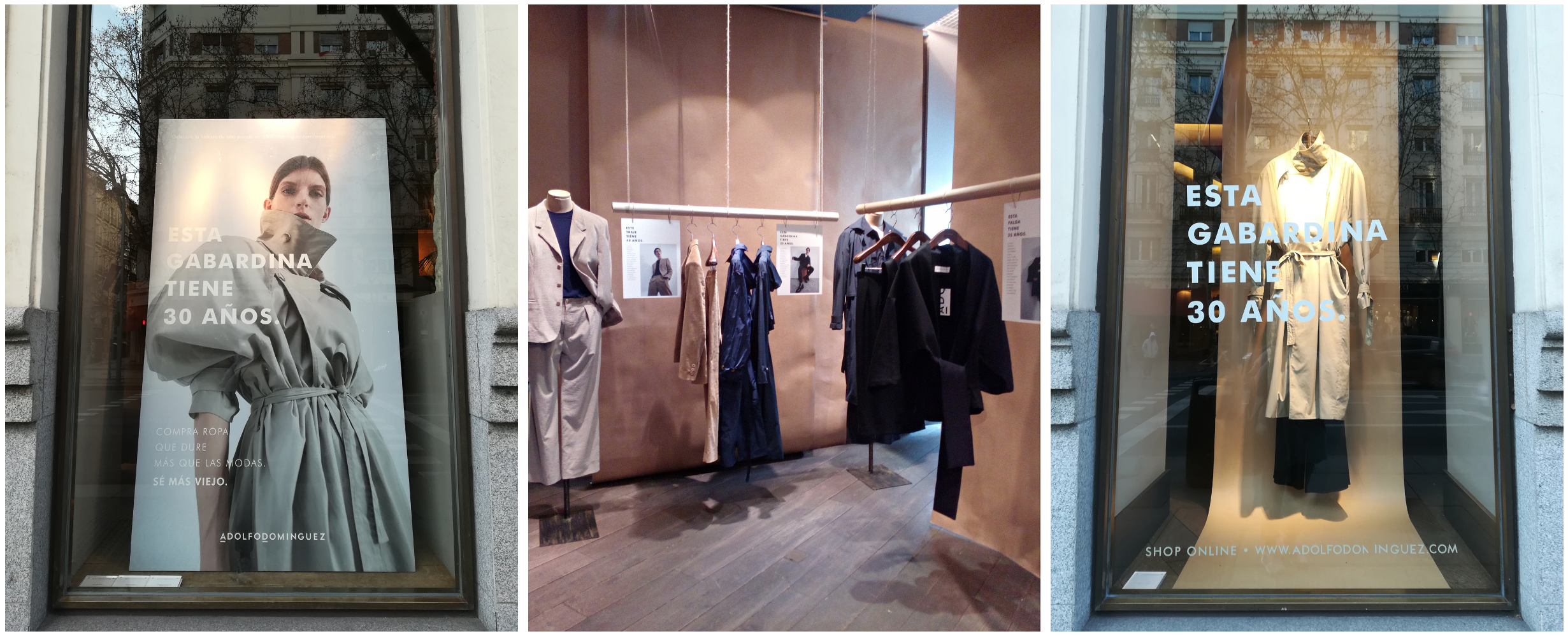
Visual Analysis II: Tommy For Life
The pieces chosen for this visual analysis are pulled from Tommy Hilfiger’s “Tommy for Life” initiative mentioned in an earlier case study. The depictions and visual representations in these solutions are centered around environmental sustainability and a circular business model of reusing old or damaged clothes rather than throwing them out. Additionally, many depictions include diversity and inclusion, as that is a driving theme of Tommy Hilifiger’s marketing initiatives across all the brand’s projects. The audience for “Tommy for Life” would likely be anyone who shops Tommy Hilfiger or Tommy Jeans, but the marketing as far as the model demographic and the support of causes like sustainability seem to target younger adults like members of Gen Z and millennials. Geographically, its target audience is limited to the Netherlands as this is the area of operation for “Tommy for Life,” however, there are plans to quickly expand throughout Europe.
This visual solution was designed to be consumed digitally, with some visuals extending to packaging design and embellishments like clothing tags. Most of the visual design is housed on the expansive website, which is packed full of information about this initiative and how it aligns with Tommy Hilfiger’s values on sustainability, diversity, and inclusion. The web presence of this brand serves as a home base for the information on “Tommy for Life,” in addition to being a place where social media campaigns and web ads can be directed. While evidence of print materials for this project could not be found online, it is likely that there are some small print pieces, such as posters and signs, that were designed as part of the visual solution in the Netherlands.
Recently, there has been an uptick in information about mankind’s impact on the environment, resulting in important conversations about the environment and sustainable choices that can be made to lessen the overall impact. Initiatives such as “Tommy for Life” were developed as reactions to the call for sustainable options. As time goes on and the cultural attention and value on environmental sustainability increases, projects like this one will only become more relevant and sought after by larger audiences.
When analyzing the content of the visual solutions, there are a few key interrelations. Starting with photography, they were intentional about diversity and inclusion within the photography for the visual solutions. Not only is racial diversity present in almost every photo, but there is even inclusion for those with disabilities represented by the young woman in a wheelchair. This closely aligns with Tommy Hilfiger’s values for diversity and inclusion. Additionally, it also aligns with the values of Gen Z when it comes to representation in diversity and inclusion. The poses of the models and the clothing they are wearing create a visual energy that represents youth and renewal. Even the backgrounds of some of the photos have the gradient colors of a sunset and a sunrise, alluding to the start of a new day, refreshed and full of new possibilities. This is an interesting parallel to the clothing in this project as they were originally used or damaged but then given new life through the “Tommy for Life” circular model. The typography is clean and simple sans serif, an observed trend within the visual analyses in this thesis. The brand marks are paired with other marks that equate to environmental consciousness, such as the “Fashion Forward” logo.
An additional but important observation within this visual analysis is the use of celebrity endorsement for Tommy Hilfiger and its efforts for sustainability, diversity, and inclusion. In one example on the website, Tommy Hilfiger partnered with Shawn Mendes to promote sustainable clothing. There is a large photo of Shawn with a diverse group of people wearing Tommy Hilfiger as part of a press release for the collaborative clothing line. Based on the findings in the literature reviews about influencers and celebrities, this was a strategic and successful move by Tommy Hilfiger. Gen Z is likely to listen to influencer voices when it comes to purchases, especially if the influencers align with their values. In this case, “Tommy for Life” aligns with Gen Z’s values for environmental sustainability.
From this visual analysis, much can be learned for the visual solution of this thesis. “Tommy for Life’s” focus on environmental sustainability, diversity, and inclusion resonates with the target audience, Gen Z. The utilization of a celebrity influencer as part of a collaboration is also an approach that could be implemented in the theoretical design solution. It worked well for Tommy Hilfiger, and there is a high probability it would work for the visual solution of this thesis.
Tommy for Life Circular Business Model. 2020. Tommy Hilfiger, https://nl.tommy.com/circular-business. Accessed 6 May 2024. 
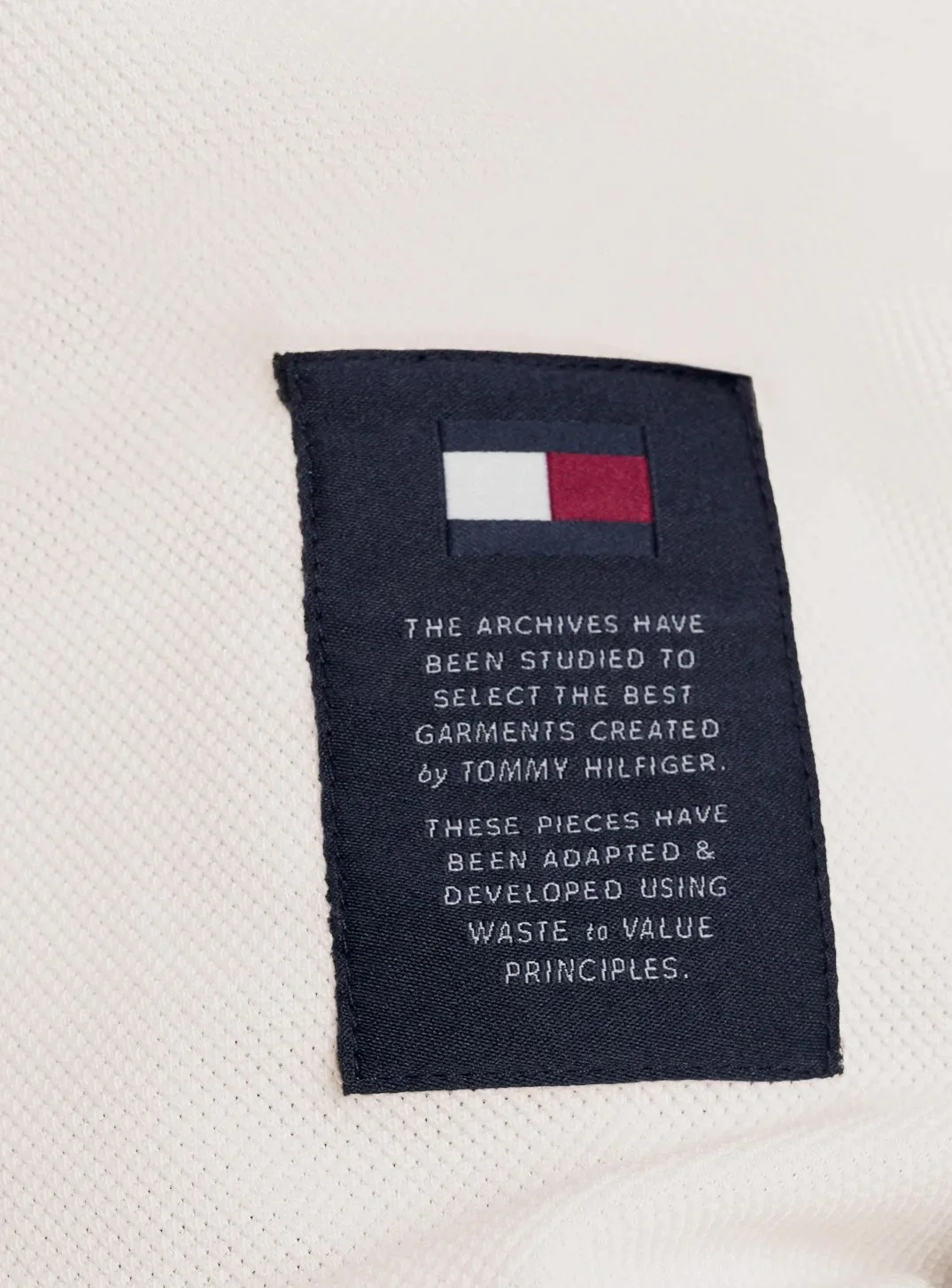

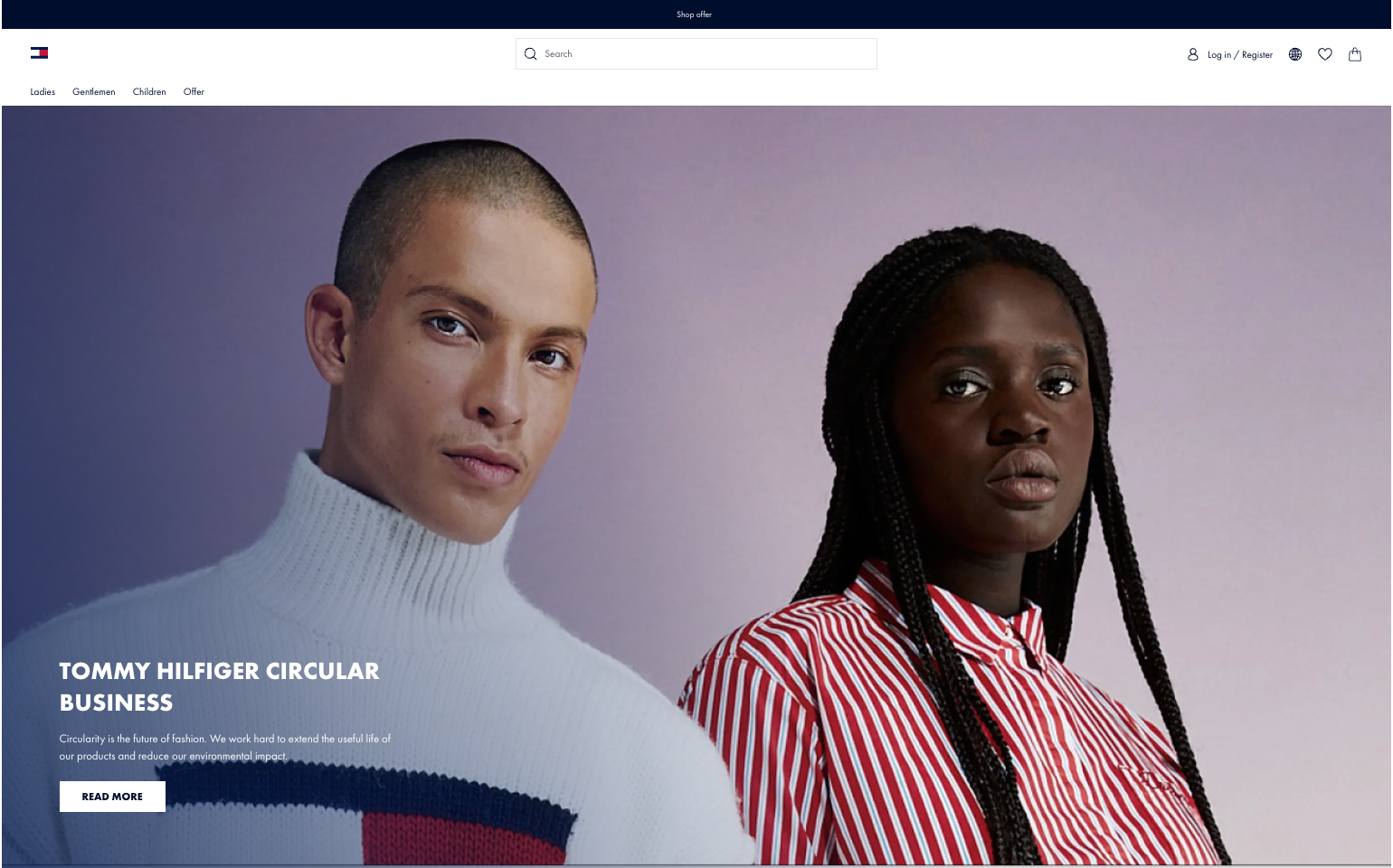
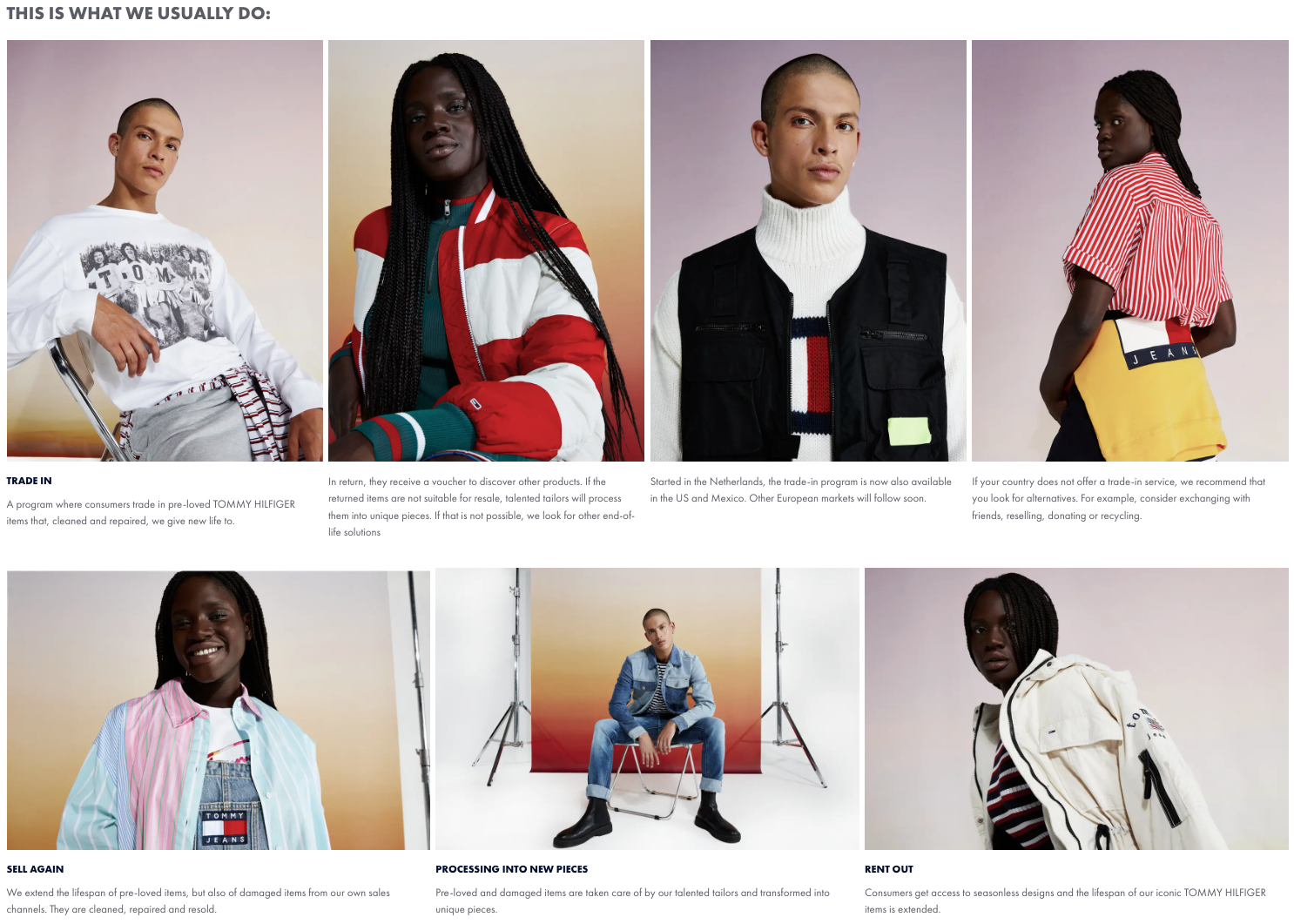



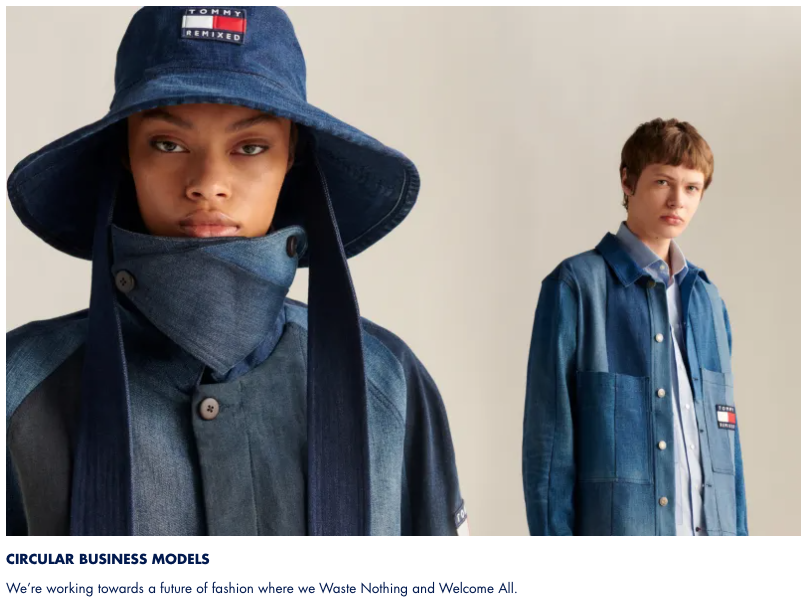








Visual Analysis III: ThredUp
This visual analysis examines ThredUp’s design identity. This brand, which specializes in selling second-hand clothing, uses dynamic images combined with illustrations in its marketing. ThredUp also partnered with the Netflix show Stranger Things to promote sustainable fashion. This partnership reached its target audience, Gen Z, and millennial females. Research shows that the audience primarily consumes this visual solution digitally, in addition to a few product packaging pieces like shipping boxes and labels. This company’s primary marketing efforts take place through targeted social media ads and partnerships, like the Netflix partnership with Stranger Things.
Similar to the other case studies, this brand finds cultural relevance through its mission for environmental sustainability. ThredUp promotes sustainable practices through the consumption of second-hand clothing rather than the purchase of new clothing, such as fast fashion. As awareness surrounding environmental impact increases, so does the relevance of second-hand, sustainable brands like this one.
When analyzing the content of the visual solutions, there are a few key interrelations within the designs. Unlike the other two visual analyses presented, this brand heavily relies on illustration in its visual solutions, sometimes even combining photography with illustration. The brand colors are bright and cheerful, echoing the positive feelings associated with making sustainable choices when it comes to the consumption of clothing. The color palette also tends to lean into a more feminine color palette with pink and aqua/turquoise colors. This is likely intentional, as the brand only resales women’s and children’s clothing. They do not offer men’s clothing in their online store. Analyzing their photography provides a look at their laid-back, approachable style. Whereas some brand photos clearly have models that are photographed in clothing, these photos look more laid back and processed with photo filters. It is almost as if they could have been taken off of someone’s Instagram profile. This makes the brand feel relatable to the consumers who are buying from this brand. When the photos are paired with illustrations, the illustration style is consistent and provides a certain energy to the photos. The illustrations are either a strong solid-color contour around a person or a trailing, almost doodle-like line that weaves and wraps through the photo. The doodle-like line could be associated with sewing thread, connecting the visual assets to the brand name ThredUp. It is important to note that the doodles are present within the photos but do not distract from the subjects in the photos. The illustrated elements serve only to enhance the subject within the photos and are always a secondary element.
Analyzing the graphics that are illustrations further solidifies ThredUp’s visual language. The illustration style in social media posts is a mix of playful illustrations built around organic shapes and modern iconography like emojis. This further communicates the brand’s joyful nature and the positive implications that come with shopping sustainability. ThredUp’s website and social media lean heavily on the use of illustration, and there were many examples to analyze. All of the illustrations use the same playful colors and organic shapes. Many of them have a subtle texture that adds a little bit of detail to the simple shapes and color palette. Additionally, many of these illustrations, especially on the website, have subtle animated movements to them. For example, the smoke in many of the illustrations, indicating pollution caused by clothing consumption, would often flicker between two or three frames of animation to show movement. These animations were always simple but made a big impact, bringing further life to illustrations that were already brightly colored and lively.
Illustrations and filtered photos like the ones used in this brand’s visual identity are what make it successful at communicating to younger audiences like Gen Z. This generation is inundated with messages and images every second of every day, so visual solutions that grab attention through aesthetics, color, or movement are most successful in communications with younger generations. These are the aspects that would be helpful in the implementation of the theoretical solution of this thesis, especially in a design solution that targets Gen Z.
Photos from ThredUp’s Facebook Page. ThredUp Facebook Page, https://www.facebook.com/thredup. Accessed 6 May 2024.
ThredUp Images and Illustrations from Website. ThredUP, https://www.thredup.com/. Accessed 6 May 2024. 






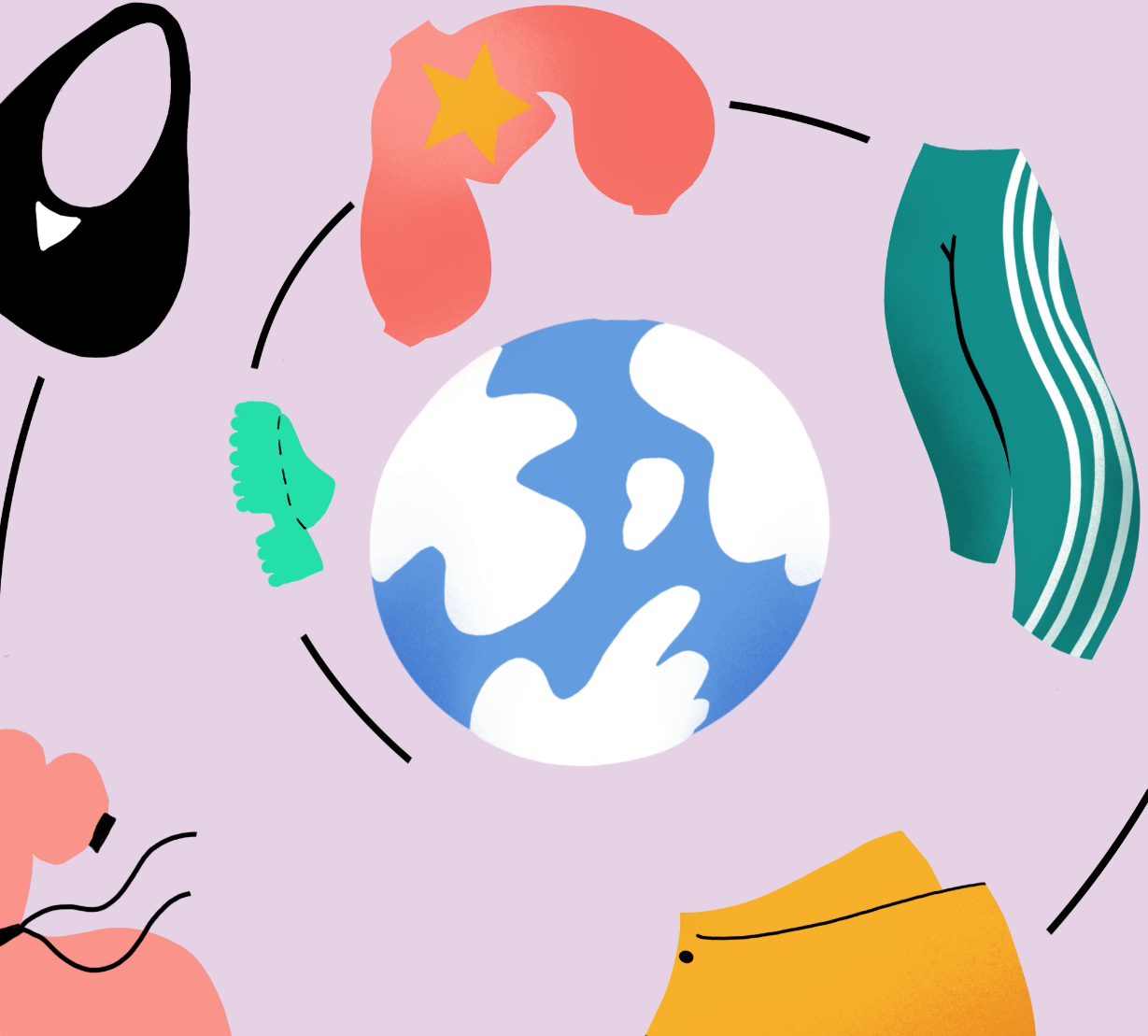











Submitted in Partial Fulfillment of the Requirements for the Degree of Master of Fine Arts in Graphic Design at Liberty University
The thesis presented here is an educational exercise completed by students in pursuit of their degree. The student, committee, and Liberty University make no guarantee (expressed or implied) about the completeness, accuracy, reliability, or suitability of the information presented. The views and opinions (personal, religious, philosophical, or political positions) found in this project are solely those of the student and do not necessarily reflect the views or opinions of the committee or Liberty University.
A Special Thanks to my MFA Thesis Committee, whose time and guidance greatly helped shape this project. I could not have done it without you.
Chair: Bri O’Neal, MFA • First Reader: Bill Dewhurst, MFA, MA • Second Reader & Thesis Advisor: Joshua Wilson, MFA, MFA • Editor: Kendra Gray
